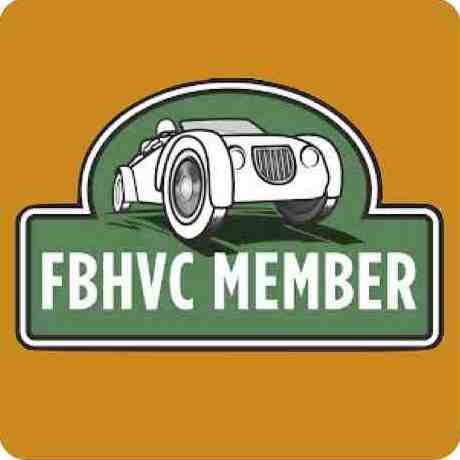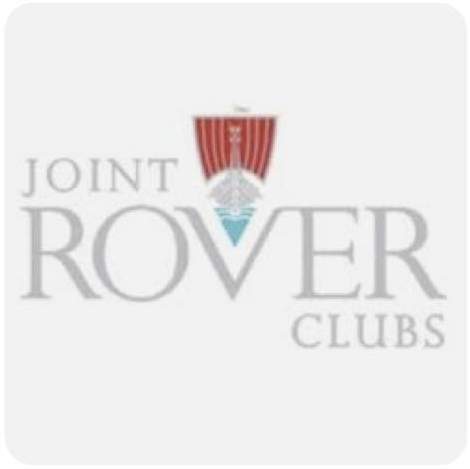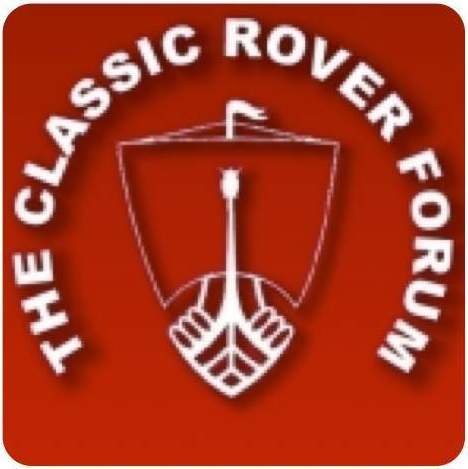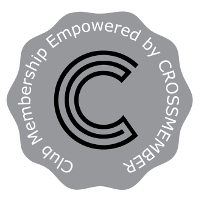Intro
We’ve all heard the pessimism. Classic car clubs are on the decline, membership numbers are dwindling year on year, and owners think they can get everything they need online for free. Read the press and look at the size of the communities on Facebook and you’d be forgiven for thinking the classic car club was running out of purpose in the digital age.
But we’ve found the opposite is true. The point of a classic car club remains the same as it has always been. The clubs are still the hub of the classic car communities, the classic press still look to them for expert opinion and promotion, and major events like the NEC Classic Motor Show still rely completely on the club scene for their success. In fact, if anything the digital age is only strengthening the place of the club at the heart of the classic car communities. Classic car ownership is rocketing in popularity (up from 1.1m to 4.5m people in 5 years in the UK)[1] and the clubs can lead the way in driving this popularity by utilising new digital platforms. Promoting the cars that clubs support to ever larger numbers of enthusiasts is easier than ever with universal social media platforms and digital channels.
But the decline in club membership numbers across the board won’t turn itself around organically. Managing committees of classic car clubs need to fundamentally reconsider how they are operating in the digital age or else face continued decline. Owners and enthusiasts have become used to getting support and information for free and clubs need to work harder to demonstrate their benefits and compete effectively.
A decline in classic car club membership across the board
We attend all of the 7 major indoor classic car shows in the UK each year, and when there we spend time speaking to organisers and managing committee members of other clubs. Speaking to other clubs is a good barometer to check our own activities are on track, but it’s also a valuable insight into the club scene. We’ve noticed a quiet but consistent background level of pessimism for the future of the classic car club movement. It’s not a universal truth: there are many clubs we speak to who are experiencing growth just as we are, and many clubs have small but consistent levels of loyal members reflecting the small numbers of niche cars they serve. But many larger clubs talk about a downward trend in member numbers.
We wrote to the FBHVC (Federation of British Historic Vehicle Clubs - the lobbying and research body to which the vast majority of true volunteer-run, membership-owned classic cars clubs are affiliated in the UK) to ask them for some reliable information to understand whether these claims had any statistical basis. As a member club of the FBHVC, we are required to submit key data about the number of members in our club each year. So we asked them to disclose what the overall membership figures were for all FBHVC member classic car clubs in Britain for the last few years. The result? In 2015 there are 3,000 fewer members of classic car clubs in the UK than in 2012. In real terms, this represents a decline in classic car club membership of nearly 10% in 3 years.[2]
But that isn’t the case for us in The Rover P6 Club. In the same 3 years have grown by an astonishing 75%, with our best year (2014) achieving a staggering 25% growth in one year. We are now 20% bigger than the mean average club size of 469 members and forecasting to be 25% bigger in the next 12 months. Clearly there are many factors to our growth, not least the considerably increased popularity of the car we support. But whatever the causes, we realised we were significantly bucking the trend and starting to demonstrate that classic car club membership decline needn’t be an inevitability.
As we discussed in our second blog, the received wisdom that Facebook (and other forms of social media) is killing the classic car club is a complete misconception. In fact, the opposite is true. A well thought through social media strategy has the power to actively contribute to an increase in membership numbers, and we calculate that Facebook alone is directly responsible for up to 20% of our new members year on year.
Staying relevant in the digital age
But that doesn’t tackle the real crux of the question. When new potential members walk up to our stand at the NEC or EventCity Manchester to look at the cars we are displaying and chat generally about a technical issue he may be experiencing, or just how much that person enjoys the cars, they are waiting to be convinced why they should join a classic car club. £25 per year doesn’t sound like a lot of money, but it is a financial commitment that people need to be convinced is worth making.
The advent of social media and free web forums has put a wealth of specialist technical and historic information within the reach of classic car enthusiasts for free. People naturally want to feel convinced that membership of a classic car club can offer them something significantly over and above this freely accessible information. Simply behaving like a ‘closed door’ organisation no longer washes in the digital age. Holding specialist technical information and support and guidance back behind gates that cannot be passed without paying membership subs is off-putting and increasingly out of date as a way to behave in the digital age. People naturally want to try before they buy. This is the heart of the question ‘why should I join a classic car club in the digital age?’
In the next series of blogs, we will be discussing our ‘Attraction, Service, Retain’ strategy and describing in detail how we are offering services for free to non members as part of our Attraction strategy. When non members see an organisation that is both open and helpful, and acting expressly in the interests of the cars and the people who own them (rather than for its own self promotion or preservation), they will feel far more convinced of the authority and usefulness of that organisation, and therefore significantly better persuaded that it is worth paying to become a member of it.
But there is far more to it than this. The digital age has indeed brought about a revolution in the way information can be written and disseminated freely to ever broader numbers of people on several different platforms (web forums, Facebook, etc) irrespective of the geographical proximity of the people contributing. It is a genuine information revolution that is affecting far bigger and more important circles than just the classic car world. But with this greater democracy of information comes an inevitable minefield. Differing opinions abound, misinformation is circulated with ease and without authority, and even accurate and valuable technical advice (for example) is often fragmented and tangled in a web of discussion as part of a question and answer session on a web forum that was intended to answer one specific question rather than offer a complete and comprehensive technical article that takes in all factors. Likewise the dissemination of historic information and pictures is often vulnerable to hearsay and lack of proper research. And smaller issues, like ‘what is the paint code for my car?’ All of this information and knowledge is out there, but it is in a tangled web.
Making the best of the digital revolution
The digital revolution therefore holds huge benefits for the classic car club that they did not have access to before. Through social media and web forums, clubs can very quickly become aware of new owners and projects, and easily get in touch with technical and historical experts who have shown their expertise online.
The ‘point’ of a classic car club therefore remains the same as it was when it was founded: to curate information and condense it into singular authoritative articles that are proven and accepted by large numbers of experts within their field. And to offer these articles, information and services to the membership. Likewise, the contact details of specialists, large companies and individuals expert in specific conversions, or remanufacturing obsolete parts on a small scale, is collected. The classic car club can collate all of this information, disseminate contact details, and actively recommend services and individuals, either through articles in magazines or through recommendation on social media in answer to a specific question asked by an individual - member or not.
The greater availability of free online project management and data tools is also a revolution that is empowering the classic car club. It is now easier than ever to gather information and data, store it in the Cloud, and share it across the club - either on your website or between members of the committee to reduce bottlenecks from one person holding all the information, and prevent the withholding of information from the collective.
Simple things such as recording the model, colour, year, condition and price of every single classified advert for a particular car on the internet allows classic car clubs to build up an active and accurate database of the average selling value of the cars they support. And understand the difference in values by model, year, condition, colour, even geographical location.
It is tools, behaviours and projects like this that put the classic car clubs at the centre and hub of the communities. By collating, refining and curating information, technical advice and support, contact details, selling prices, the availability of hard-to-source parts, solutions to rare and difficult technical problems, and definitive accounts of mechanical conversions and upgrades, the classic car club can place itself as the definitive authority and comprehensive central resource for the community of cars that it supports. In turn, it can support members (and potential members) and the promotion of their cars through their own social media channels and glossy press to ensure the continued survival of their cars.
Each of the modern, digital channels for sharing information about classic cars - Facebook, social media, web forums (just like the traditional channels of pub-meets and car shows) - are all still acutely relevant to the classic car community, and are often the quickest and easiest way to disseminate information. But if the classic car clubs were to continue their decline in membership figures to the point where they began to disappear altogether from the community, there would be a huge void left at the centre with no single body acting as a cohesive unit to hold the other platforms and channels (Facebook, forums etc) together, to promote the car, collate information and generate definitive information to aid in the ownership and long-term preservation of their cars.
A glum alternative
Without the classic car clubs, where would the definitive technical articles come from? This is very different from the recommendations of individuals on the internet who have done a conversion. It is a single article, requiring much research and taking all factors of model variations etc into account. Where would average selling values be collected? Where would the archive of donated historical photographs and information be stored to ensure they remained available and preserved? And who would collate the contact details of significant individuals, be they ex-designers of the car or specialist part manufacturers?
All of this information would continue to exist, but if it doesn’t reside with a single central body (an organisation, not a person), then the availability of that information becomes compromised. Newcomers to the classic car scene have to navigate their way through a web of internet-based resources in order to be told who to speak to find the key information they need. This can also create a situation where those who have done significant research, either technical or historical, feel that they do not want to give this information freely, or that it is in some sense their ‘own’ information. The net result is a loss of knowledge which is of huge consequence to the community.
The classic car club is at the centre of the classic car community - a hub linked by many spokes to individuals, companies, services, social media channels, resources, archives and authorities. It does not control or own the information of those spokes, but it does represent the hub of the community and is the single resource and authority that can be relied upon by everybody to be consistent, long-lived, available and for the benefit of all.
The point of a classic car club hasn’t changed in the digital age. It is simply that the reason to join one has become more clouded. But for as long as newcomers remain convinced they can get everything they need from free resources by asking the collective on web forums and Facebook, the classic car club scene will continue its annual decline in membership numbers.
Classic car clubs need to work harder to attract members, but the result of doing this is a net benefit to all. As the clubs and communities grow, the wealth of information contained within them becomes better connected, better researched and more available. With the club at the centre to act as the conduit for refining and dispersing proven, tested, authoritative information about all areas of owning, maintaining, preserving and promoting a classic car, communities and cars be guaranteed their safeguarded long term futures.
What do you think of the developing purpose of the classic car club in the digital age?
Please comment below and share your thoughts.
Michael Allen
With grateful thanks to Bas Homans for his contributions and support
In the next series of articles, we will be discussing in detail the strategies behind our ‘Ideal Membership Cycle’. This is a framework for growth that developed organically over the last 3 years as we built The Rover P6 Club up to its new levels. We did not start with a strategy, but the more we learned, the more we were able to see the framework in which we were operating. We identified the 3 cornerstones of success - not just in growing a classic car club, but in growing a community and promoting cars and their preservations. These cornerstones are ‘Attract’, ‘Service’ and ‘Retain’, the 3 fundamental things every classic car club needs to do with its members.
In the next article, we start by disclosing in detail, the actions, approach and strategies we have put in place in The Rover P6 Club to help achieve our remarkable growth. A growth that is not just reflected (cynically) in the raw numbers of members we have, but also reflected in the massively increased awareness of the Rover P6 in the classic car world, its skyrocketing popularity, increased values (a crucial factor in safeguarding the long term survival of the cars - they must be financially viable to restore), and in the increased exposure of the cars across the board.
Next time: Promote, Engage, Support
Next Article>>>
References
[1] - 4.5m attendees of FBHVC events in 2011 compared to 1.1m in 2006. From The British Historic Vehicle Movement - A £4bn Hobby, Historic Vehicle Research Institute (HVRI) and Federation of British Historic Vehicle Clubs (FBHVC), December 2011.
[2] - 251,298 members of 490 clubs in 2011: mean average of 513 members per club. 248,305 members of 529 clubs in 2015: mean average of 469 members per club. Figures from official FBHVC records information release to The Rover P6 Club, September 2015.




